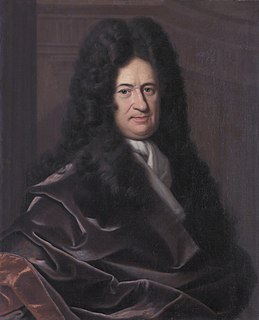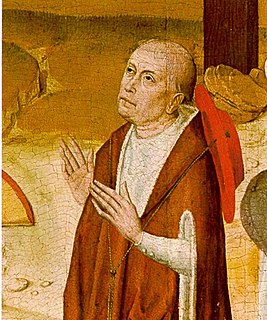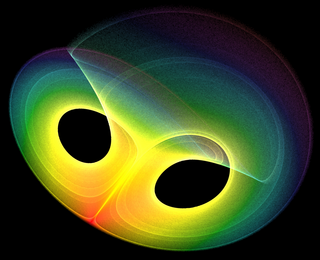The law of continuity is a heuristic principle introduced by Gottfried Leibniz based on earlier work by Nicholas of Cusa and Johannes Kepler. It is the principle that "whatever succeeds for the finite, also succeeds for the infinite". [1] Kepler used The Law of Continuity to calculate the area of the circle by representing the latter as an infinite-sided polygon with infinitesimal sides, and adding the areas of infinitely-many triangles with infinitesimal bases. Leibniz used the principle to extend concepts such as arithmetic operations, from ordinary numbers to infinitesimals, laying the groundwork for infinitesimal calculus. A mathematical implementation of the law of continuity is provided by the transfer principle in the context of the hyperreal numbers.

Gottfried Wilhelm (von) Leibniz was a prominent German polymath and philosopher in the history of mathematics and the history of philosophy. His most notable accomplishment was conceiving the ideas of differential and integral calculus, independently of Isaac Newton's contemporaneous developments. Mathematical works have generally favored Leibniz's notation as the conventional expression of calculus. It was only in the 20th century that Leibniz's law of continuity and transcendental law of homogeneity found mathematical implementation. He became one of the most prolific inventors in the field of mechanical calculators. While working on adding automatic multiplication and division to Pascal's calculator, he was the first to describe a pinwheel calculator in 1685 and invented the Leibniz wheel, used in the arithmometer, the first mass-produced mechanical calculator. He also refined the binary number system, which is the foundation of all digital computers.

Nicholas of Cusa, also referred to as Nicholas of Kues and Nicolaus Cusanus, was a German philosopher, theologian, jurist, and astronomer. One of the first German proponents of Renaissance humanism, he made spiritual and political contributions in European history. A notable example of this is his mystical or spiritual writings on "learned ignorance," as well as his participation in power struggles between Rome and the German states of the Holy Roman Empire.

Johannes Kepler was a German astronomer, mathematician, and astrologer. He is a key figure in the 17th-century scientific revolution, best known for his laws of planetary motion, and his books Astronomia nova, Harmonices Mundi, and Epitome Astronomiae Copernicanae. These works also provided one of the foundations for Newton's theory of universal gravitation.
Contents
A related law of continuity concerning intersection numbers in geometry was promoted by Jean-Victor Poncelet in his "Traité des propriétés projectives des figures". [2] [3]
In mathematics, and especially in algebraic geometry, the intersection number generalizes the intuitive notion of counting the number of times two curves intersect to higher dimensions, multiple curves, and accounting properly for tangency. One needs a definition of intersection number in order to state results like Bézout's theorem.

Jean-Victor Poncelet was a French engineer and mathematician who served most notably as the Commanding General of the École Polytechnique. He is considered a reviver of projective geometry, and his work Traité des propriétés projectives des figures is considered the first definitive text on the subject since Gérard Desargues' work on it in the 17th century. He later wrote an introduction to it: Applications d’analyse et de géométrie.






